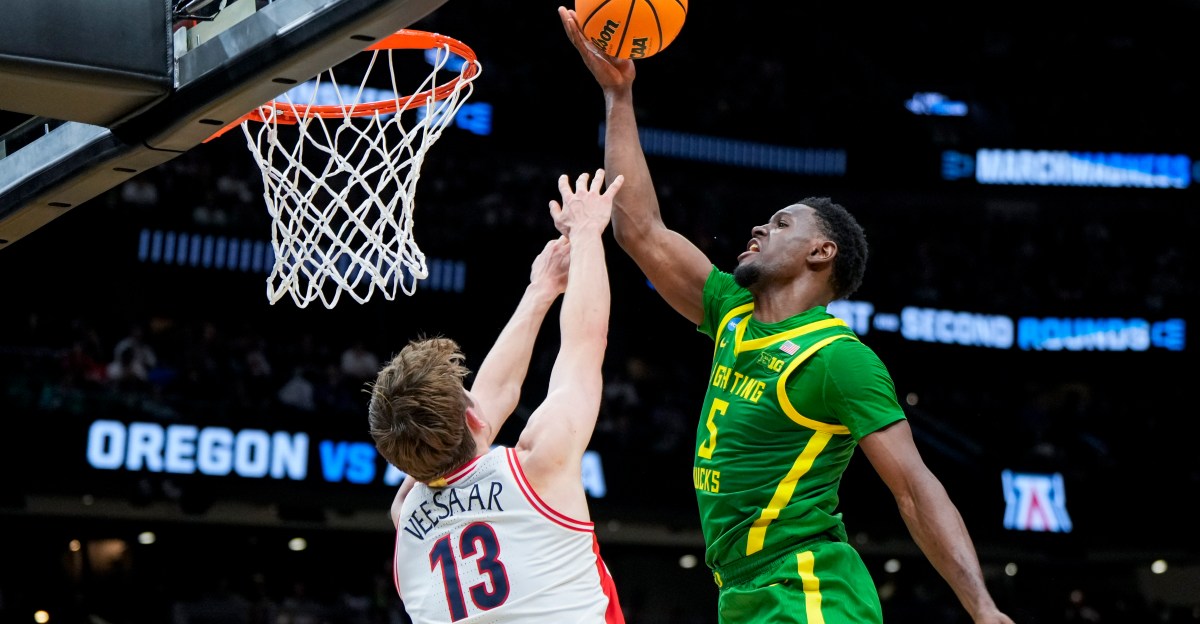Oregon Ducks Softball: Pitching Statistical Review
Building on the numbers I ran for the baseball team, this week I am breaking down the performance of Oregon softball’s pitchers against their peers on teams that make the Women’s college world series. All the stats you see in this article come courtesy of d1softball.com.
Due to the nature of underhand pitch softball being less stressful on human arms, softball pitching staffs are significantly smaller than their counterparts on the mound. In 2025, Oregon generally rotated between only two pitchers in competitive games: Lyndsey Grein and Elise Sokolsky. This is actually a typical strategy if a team has one or two truly elite pitchers (see Texas Tech this year). It wasn’t the plan going in to the season however. Unfortunately an early season injury to Staci Chambers and a sophomore slump from Taylour Spencer led to less rotation in the circle than the staff had hoped for.
I compiled stats for pitchers from WCWS teams from 2021-2025. I compared Grein to the pitchers who had the greatest number of innings pitched per team and Sokolsky to the second most. Given the limited rotation in softball I amalgamated all other pitchers with at least 40 innings pitched as “bullpen” players, and censored any pitcher with fewer than 40 innings pitched over the course of the season.
Before I go through the results, here is a quick primer on the stats I decided to use for this article. Full formulas and more detailed descriptions can be found here.
ERA – Earned Run Average estimates how many runs a pitcher will surrender in the course of a given game. It is computed by taking the total earned runs a pitcher gives up, dividing by innings pitched, then multiplying by 9.
WHIP – Walks Plus Hits per Inning Pitched adds the total number of base hits and walks a pitcher gives up, then divides by the number of innings pitched. The result estimates how many players a pitcher will allow on base in a typical inning.
xFIP – Expected Field Independent Pitching attempts to produce a measure similar to ERA but that only depends on aspects of the play in a pitcher’s control. Essentially it tries to measure the number of runs a pitcher would give up if they had league average fielding on defense. Additionally, xFIP substitutes a league wide average of home runs per fly ball rather than using home runs directly. This is meant to adjust for pitchers whose home parks are easier to hit homers in.
SIERA – Skill-independent Earned Run Average also attempts to replace ERA with a statistic that is independent of the defense outside of the pitcher’s performance. The major difference between SIERA and FIP is that SIERA takes into account the type of hits a pitcher gives up, so pitchers who give up more pop-ups and grounders than line-drives will have a better SIERA than FIP.
So how did Oregon’s pitchers do in 2025 compared to their counterparts on teams who won super-regionals?
Lyndsey Grein vs WCWS First Pitchers
| Statistic | ERA | WHIP | xFIP | SIERA |
|---|---|---|---|---|
| Statistic | ERA | WHIP | xFIP | SIERA |
| WCWS Median | 1.84 | 0.99 | 2.24 | 3.01 |
| WCWS Std Dev | 0.70 | 0.19 | 0.87 | 1.02 |
| Lyndsey Grein | 2.13 | 1.07 | 2.24 | 2.76 |
Tristan Holmes and d1softball.com
Grein’s numbers show she is no slouch, but has to be considered below average compared to her peers on WCWS teams. She is right at the median in xFIP and on the good side in SIERA, but her raw ERA and WHIP are (less than a full standard deviation) below average. These numbers don’t take into account her strong first half and lackluster second half of the regular season. Whether her early 2025 form is a performance that she could possibly sustain over a full season remains to be seen.
Elise Sokolsky vs. WCWS Second Pitchers
| Statistic | ERA | WHIP | xFIP | SIERA |
|---|---|---|---|---|
| Statistic | ERA | WHIP | xFIP | SIERA |
| WCWS Median | 2.11 | 1.09 | 2.62 | 3.37 |
| WCWS Std Dev | 1.02 | 0.58 | 0.92 | 1.20 |
| Elise Sokolsky | 2.12 | 1.07 | 2.47 | 3.56 |
Tristan Holmes and d1softball.com
Sokolsky’s season numbers are extremely close to Grein’s. Because she is being compared to second pitchers though, she looks better in comparison. Her raw numbers on the good side of the median, but that is against Big Ten batters. Her xFIP and SIERA are about average, xFIP a bit better and SIERA a big worse. This indicates she is a capable second regardless of conference.
Staci Chambers injury meant she didn’t have a large enough sample size for me to include. Taylour Spencer just missed the 40 inning cut off (by exactly one out), so even though she wasn’t included in the “bullpen” sample I think it is instructive to compare her to relievers on other WCWS teams.
Taylour Spencer 2025 vs. WCWS Bullpen Pitchers
| Statistic | ERA | WHIP | xFIP | SIERA |
|---|---|---|---|---|
| Statistic | ERA | WHIP | xFIP | SIERA |
| WCWS Median | 2.60 | 1.19 | 2.84 | 3.62 |
| WCWS Std Dev | 0.67 | 0.23 | 0.79 | 0.91 |
| Taylour Spencer | 4.06 | 1.51 | 3.6 | 4.33 |
Tristan Holmes and d1softball.com
Comparing these numbers to those of Grein and Sokolsky, it is easy to see why Spencer saw so little action as the season went on. She was more than a full standard deviation away from her peers on WCWS teams in ERA and WHIP, and even in the advanced stats close to a full standard deviation on the wrong side of the median.
These numbers show Grein and Sokolsky can both be part of a championship rotation, but aren’t the kind of player who can carry a team to the finals. It is no surprise that both finalists in 2025, Texas and Texas Tech, had first pitchers who played more than 200 innings and were above average in every one of these stats (in some cases by nearly a full standard deviation). The team needs to look into better ways to support developing players like Spencer manage the pressure that comes with pitching for a high level NCAA softball team. Her 2024 numbers, while still not to the WCWS standard, were notably better against stronger Pac-12 competition. A return trip to Oklahoma City would be far more likely if Spencer found her freshman form again and built on it.
Share this content:













Post Comment